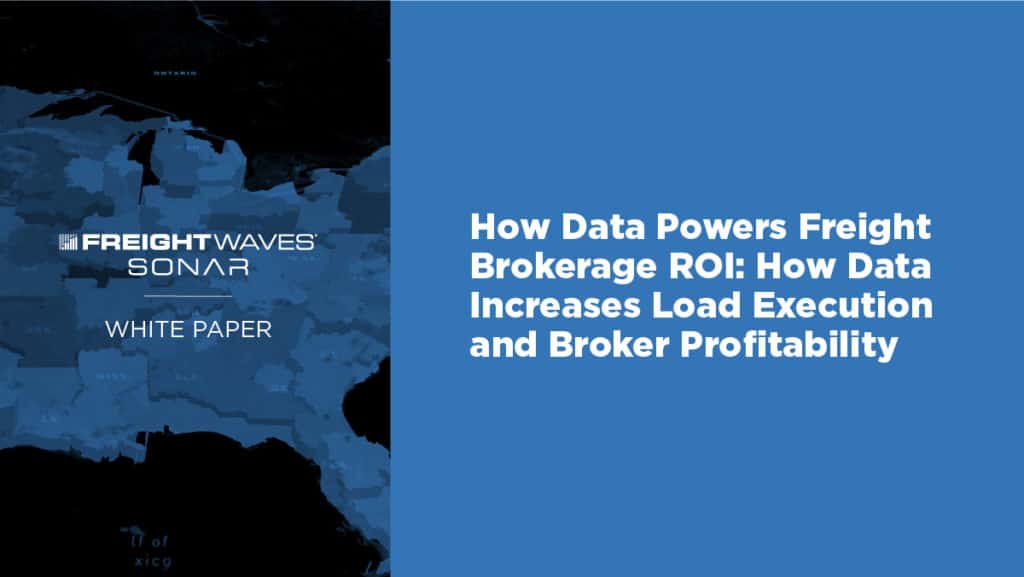Relying solely on manual shipping data analysis continues to yield poor results. The adage of trying too many workers and not enough leaders grows more apparent. And even the freight management analytics of five years ago do not necessarily respond well to today’s shifting and changing market. The old ways of recording, processing and responding to analytical data need a streamlined approach. New ways must be adopted. And that all begins with deploying advanced freight management analytical resources and tools that actively work to lower all risks, ranging from detention through final mile management.
Problems will arise despite the best planning and preparation, but freight management analytics can help reduce their frequency and severity while making the entire process more streamlined. According to Business Wire, “Supply chain analytics holds the key to mitigate a number of businesses complexities. It has the potential to enhance the end-to-end performance of the supply chain in terms of financial, operational, as well as managerial aspects.” It all begins with understanding what happened. Identifying past issues is the job of descriptive algorithms within analytics, showing what happened. By using descriptive and diagnostic analytics, freight management parties begin to see not only what happened, but why. In this critical moment, the idea of freight foresight and prediction takes hold within shipping tools.

An inability to look beyond the four walls of an enterprise remains a constant threat to today’s freight management parties. Outdated analysis and management methods are becoming increasingly more difficult amid lockdowns, supply shortages, and increased consumer demands. And the current predictions for the industry have only made these shortcomings more obvious. Freight management analytics have also advanced significantly, affording insight into carrier performance. That leads enterprises to a more streamlined and efficient process from end to end.
It’s important to recognize a core problem among logisticians today. Analytics available now are not those of the early 2000s. They have advanced and brought faster and easier-to-understand supply chain KPIs. Remember that freight management analytics simply interpret raw data to help draw conclusions about performance, costs, profits and chain management. Mainly, freight analytics used in the shipping and freight management industry to improve load and order acceptance and freight loads. In the past few years, the focus has been on the use of data analytics in the supply chain to continuously look for the most lucrative opportunities. In turn, freight management parties realize a stronger ROI and increased profit margins.
A benefit freight management and logistics teams can enjoy by embracing freight management analytics is a more streamlined approach that allows for better communication and improved visibility. According to Industry Week, “All businesses with a supply chain devote a fair amount of time to making sure it adds value, but these new advanced analytic tools and disciplines make it possible to dig deeper into supply chain data in search of savings and efficiencies.” And by digging into that data faster, the typical barriers to analytics in shipper and digital brokerage uses fall by the wayside.
Leveraging freight management analytics will always have benefits in freight and logistics. It has the potential to handle all types of data regardless of mode, possible effects of disruptions like weather and more. With accurate data and automation, enterprises can stay ahead of the curve. And that’s a remarkable advantage in the profit margin-thin world of logistics. Also, artificial intelligence (AI) services and a digital approach reduce inefficiencies by using new tools, e.g., chatbots, to create better experiences and engage with clients. That boosts overall communication and allows for better decision-making in real-time, becoming actionable broker sales tips too.
Software designers built freight-based SaaS systems for easy implementation by teams within the freight industry. The same applies to freight management analytics. They can be easily deployed across whole networks without a complete overhaul to the existing IT infrastructure. And as with all things freight, less waste in deployment amounts to less waste in use. Such analytics services reduce the amount of rework, crucial to maintaining a competitive edge.
Of course, that builds on staying atop marketing trends, which inevitably enrich profits and tender execution. Learn more about how your organization can better benchmark, monitor, analyze, and forecast freight trends through analytics by requesting a FreightWaves SONAR demo via the button below.
